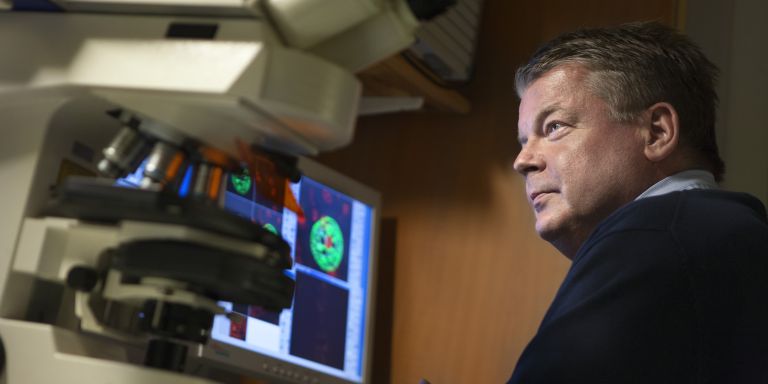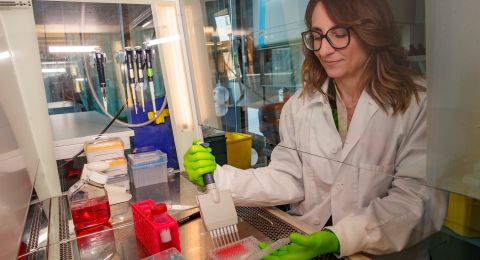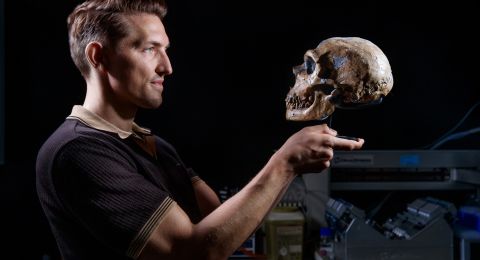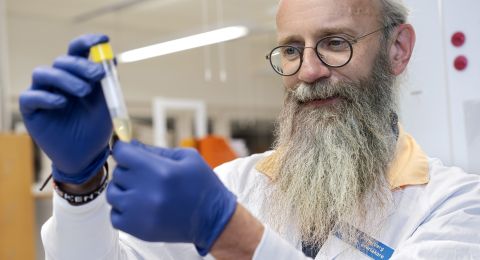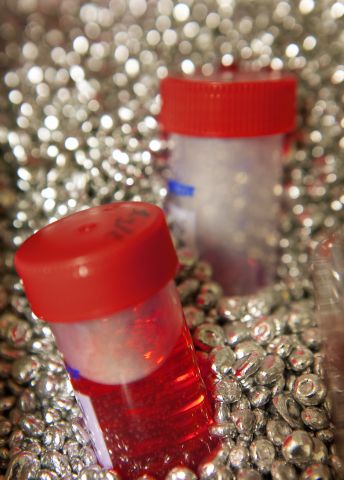
Project Grants 2011
Body’s brown fat a weapon in the struggle against obesity
Principal investigator:
Sven Enebäck, professor of medical genetics
Co-investigators:
University of Gothenburg
Claes Gustafsson
Maria Falkenberg Gustafsson
Stockholm University
Barbara Cannon
Jan Nedergaard
Linköping University
Magnus Borga
Institution:
University of Gothenburg
Grant in SEK:
42.6 million over five years
To combat body fat with more body fat may sound contradictory, but it may be a new method for treating overweight and obesity. The body has two kinds of fatty tissue that have distinct functions. Nearly all body fat consists of white fatty tissue that stores energy, calories, while a small proportion of the fat consists of brown fatty tissue that burns this same energy and converts it to heat. While larger amounts of white fat make us fatter, it appears that having larger amounts of brown fat has the opposite effect.
It has long been known that infants have active brown fatty tissue. This tissue helps them stay warm when they are exposed to cold. But it was only in 2009 that Sven Enerbäck’s research team, together with a Finnish team at the University of Turku, was able to show that adult humans also have active brown fat.
“Brown fatty tissue has been found in autopsies, and as early as the 16th century there were discoveries of what we today call brown fatty tissue. Unlike previous research, we have been able to show that adult humans also have brown fatty tissue that is metabolically active – part of our metabolism,” says Sven Enerbäck, a professor of medical genetics and physician at the University of Gothenburg and the Sahlgrenska Academy.
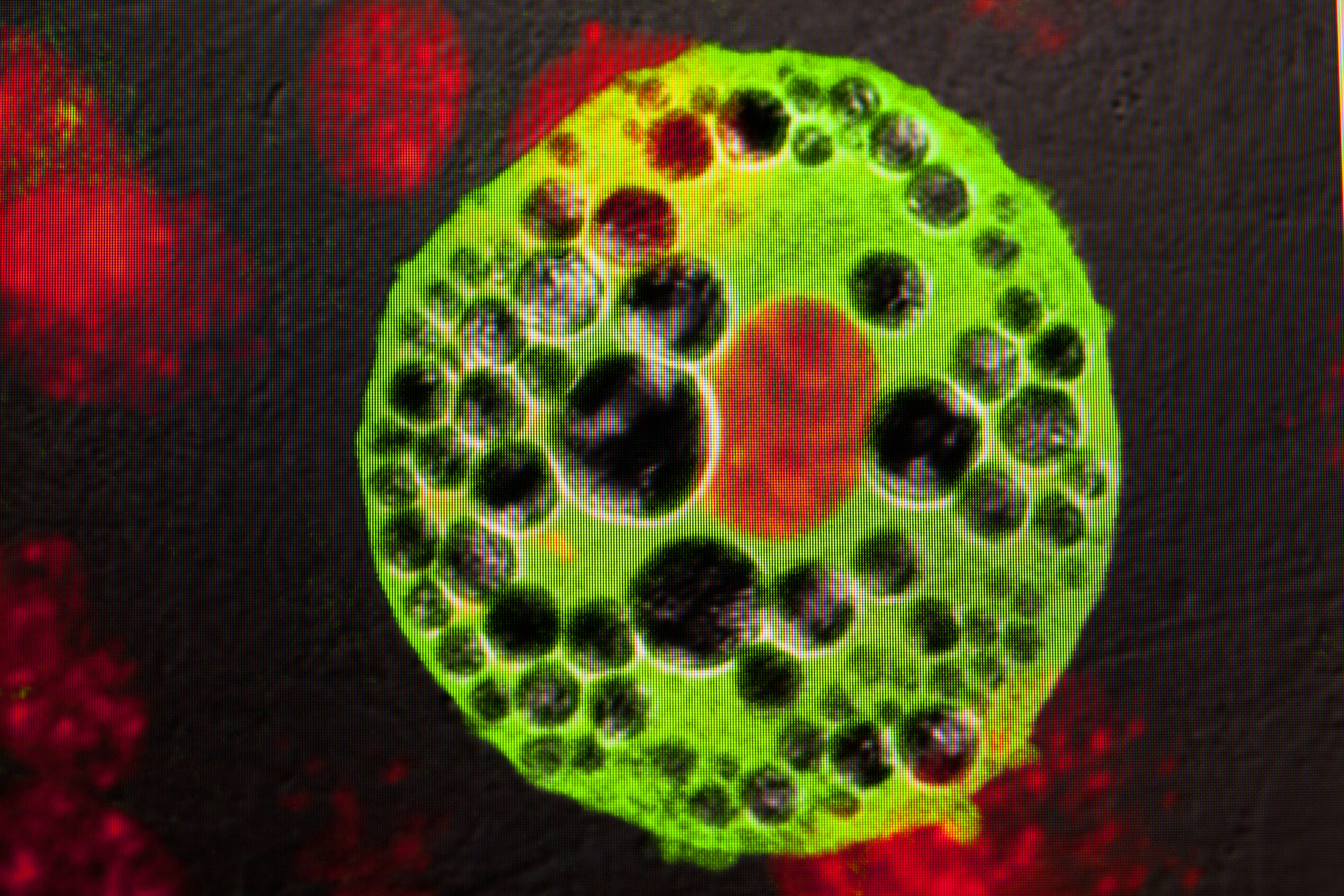
More brown fat with cold
Sven Enerbäck’s research group has received funding from the Knut and Alice Wallenberg Foundation to delve deeper into the possibilities of brown fatty tissue. The hope is that more knowledge will lead to new forms of treatment for obesity and thereby also reduce the incidence of diseases like diabetes, stroke, and heart attack, which are often associated with obesity. Today the only effective treatment for obesity is to operate.
“By studying how brown fatty tissue takes up nutrients and how they are converted to heat, we hope to be able to identify the mechanisms that activate brown fatty tissue.”
It was previously known that cold triggers such a process, but this doesn’t work as a treatment method because it is not feasible to expose patients to cold for the length of time needed for it to take effect.
Instead, the Gothenburg researchers are concentrating on the genes in the brown fatty tissue that regulate the production of heat.
Important protein
The protein UCP1 plays a central role in the energy conversion that takes place in the cell’s mitochondria.
“The mitochondria function as a powerhouse for the cell. Sugar and fat are consumed and then stored in the form of chemical energy in the molecule ATP, which can be said to be the cell’s fuel,” says Enerbäck.
Brown fatty tissue is the most mitochondrial of all, which explains the tissue’s high burning capacity.
When Sven Enerbäck did his postdoc work at Jackson Laboratory in Bar Harbor, Maine, he used a mouse model where they removed the UCP1 protein.
“When we moved the mouse from a warm room to a cold room, it was unable to regulate its body temperature, because it lacked functional brown fatty tissue.”
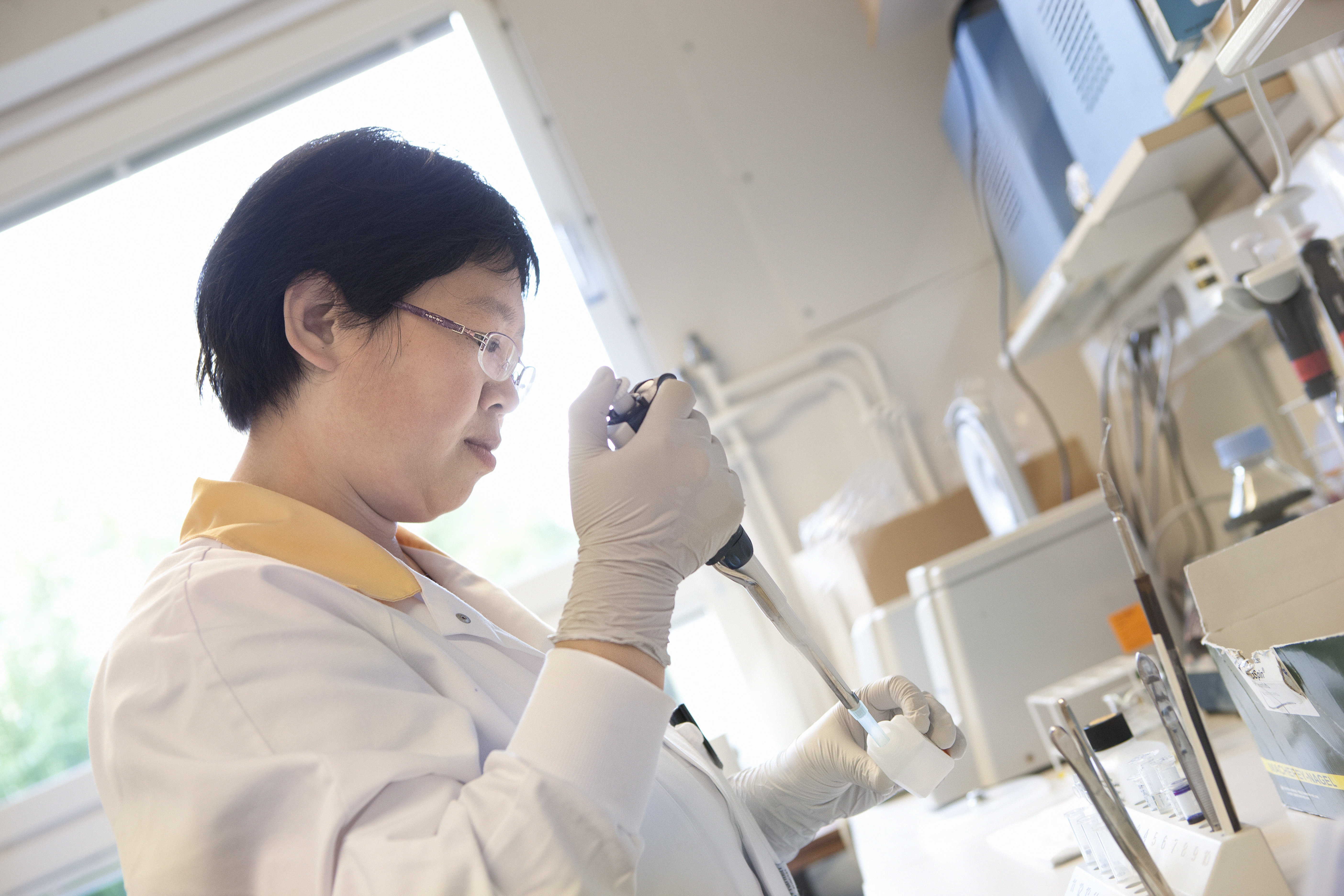
Found in unexpected place
Several years later, when Sven was discussing with Finnish colleagues at the PET Center in Turku the possibility that adult humans might have active brown fat, it turned out that they had observed inexplicable spots in PET images taken of cancer patients, and these spots were not tumors.
“This gave us the idea that those spots might be brown fatty tissue. We decided to test the theory by having healthy volunteers sit in a room with a normal room temperature of 22 degrees centigrade before their examination. These patients had smaller spots. When we repeated the examination, this time having patients sit in a room with a temperature of 18 degrees, the spots were larger.”
The spots visible in the images were next to the collarbone, which perplexed the scientists.
“We thought the brown fatty tissue would be located between the shoulder blades, as in infants.”
Some of the healthy volunteers gave their consent to the researchers to take tissue samples.
“Since the UCP1 protein is an exclusive marker for brown fatty tissue, it was perfectly clear that the tissue samples, which evinced a value a thousand times normal, really contained active brown fatty tissue,” says Sven Enerbäck.
Replace operation
One of the individuals they examined had about 70 grams of brown fatty tissue.
“If that tissue was activated for a year and functions the way it does in the mouse model, the energy burned would be the equivalent of four kilograms of white fatty tissue,” says Enerbäck.
A weight loss of four kg might not sound like much, but Sven Enerbäck maintains that it is nevertheless a significant effect.
“Even it proved to cause a weight loss of two kilos, it would be a good thing. A major problem for many people who lose weight is maintaining the new weight. There is a body memory that strives to get back to the heavier weight. Treatment over several years could also lead to more weight loss in the long run.”
Observations have shown that people with normal body weight have more brown fat and also a lower risk of developing type-2 diabetes. There are also rare disorders, including a kidney disease, where patients have an increased amount of brown fatty tissue.
“The dream scenario is to understand the mechanisms behind this and to create an activation of brown fat that could replace or be an alternative to operating.”
But Sven Enerbäck stresses that a possible future drug could never replace the necessity of maintaining good eating habits and exercising.
“Obesity is a one-cookie-a-day problem, but a pill that enables you to maintain your weight may be a possibility,” says Sven Enerbäck.
Text Carina Dahlberg/KAW
Translation Donald S. MacQueen
Photo Magnus Bergström
